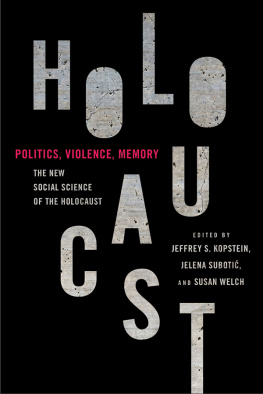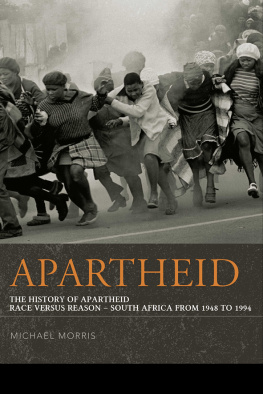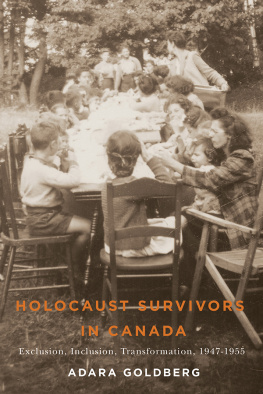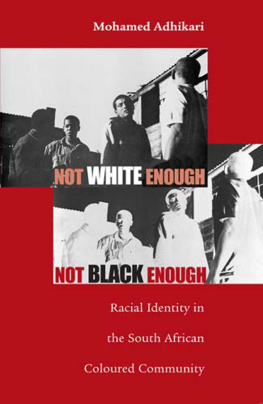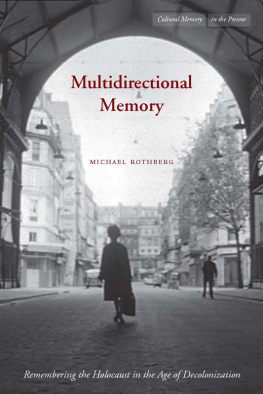New Perspectives on Modern Jewish History
Edited by
Cornelia Wilhelm
Volume
ISBN 9783110715255
e-ISBN (PDF) 9783110715545
e-ISBN (EPUB) 9783110715637
Bibliographic information published by the Deutsche Nationalbibliothek
The Deutsche Nationalbibliothek lists this publication in the Deutsche Nationalbibliografie; detailed bibliographic data are available on the Internet at http://dnb.dnb.de.
2022 Walter de Gruyter GmbH, Berlin/Boston
Abbreviations
SAJBD
South African Jewish Board of Deputies
SAZF
South African Zionist Federation
NP
National Party
CP
Conservative Party
ANC
African National Congress
SACP
South African Communist Party
CPSA
Communist Party of South Africa
NF
National Front
UN
United Nations
HNP
Herstigte Nasionale Party
SAIC
South African Indian Congress
SAP
South African Party
UP
United Party
PP
Progressive Party
SJC
Society of Jews and Christians
WCC
Witwatersrand Church Council
PAC
Pan Africanist Congress
YCL
Young Communist League
SABC
South African Broadcasting Corporation
SABC-TV
South African TV Broadcasting Corporation
GK
Gereformeerde Kerk
AFWE
Anne Frank in the World Exhibition
GLC
Greater London Council
EMU
Ethnic Minorities Unit
PLO
Palestinian Liberation Organization
PACT
Performing Art Council of the Transvaal
WFDY
World Federation of Democratic Youth
IUS
International Union of Students
UDF
United Democratic Front
SACC
South African Council of Churches
WCC
World Council of Churches
AWB
Afrikaner Weerstandsbeweging
SHIP
Student Holocaust Interviewing Project
TRC
Truth and Reconciliation Commission
AHF
Anne Frank House
Introduction: Holocaust Memory in Apartheid South Africa
Remembering the Holocaust in a Racial State explores the cultural and discursive aspects of Holocaust memory in South Africa from the early years of apartheid through to the transition to democracy (19481994). The book engages with the question: how did the racially managed society of apartheid South Africa perceive, remember, and commemorate the racial persecution and destruction of European Jewry by the Nazis? Relatively few Jewish refugees entered the country during the Second World War due to local immigration legislation, and therefore Holocaust survivors constituted a somewhat small and neglected fraction of South African Jewry. Nevertheless, during the years of apartheid, Jews and non-Jews from all sections of South Africas political and social spectrum engaged in different ways with the memories of the murder of European Jews by the Nazis.
Throughout the 1940s and 1950s, anti-apartheid activists in South Africa and abroad focused their rhetoric on delineating the parallels between policies of racial discrimination put into practice by the apartheid regime and those adopted by the Nazi regime. The inflection of Holocaust memory onto the articulation of anti-racist politics in South Africa by way of analogy indeed existed on the margins of South African public discourse. However, as this book demonstrates, Holocaust memory serves first and foremost as a central collective memory for the Jewish community in the country. By providing a rich empirical account of the centrality of Holocaust memorialization to the construction of South African Jewrys collective identity, this book traces the changing responses of the white minority to the Holocaust during the period of apartheid and as South Africa underwent political transition to democratic rule between 1990 and 1994. These responses reflect the white communities ambivalent attitudes toward Jewish whiteness in South Africa.
Apartheid, a system that legalized racism, was officially introduced in South Africa on 23 May 1948, three years after the end of the Second World War and only nine days after the Israeli Declaration of Independence. Six months later, representatives of the worlds nations convened at the Palais de Chaillot in Paris, France, to ratify two historic milestone documents: The Convention on the Prevention and Punishment of the Crime of Genocide and the Universal Declaration of Human Rights. South Africa did not adopt the genocide convention, nor did it sign the human rights declaration due to its potential to disrupt its practice of racial discrimination. Instead, the new nationalistic regime moved to entrench and intensify pre-existing racial segregation.
The apartheid-era whiteness of South African Jews placed them in a much more powerful position than other minorities that belonged to the black, Indian, and Coloured communities. Founded in the early 19th century by British Jews who were joined by Eastern European Jews in the late 19th century, the South African Jewish community quickly assimilated to the English-speaking section of society and enjoyed the economic mobility of the white minority. However, this very integration gave rise to hostility toward Jews on the part of right-wing Afrikaners, culminating in the 1930s.
The rise of Nazism in Germany over the 1930s also inspired an increase in antisemitism in South Africa. At the same time, Afrikaner nationalism and the belief in white supremacy were increasingly taking hold. Chapter 1, Nazism, Afrikaner Nationalism and the Jewish Question, examines the historical contexts in which the South African Jewish community was formed and in which the racial definition of Jewishness in South Africa was formulated. The first part of the chapter presents a historiographic overview of the formulation of the Jewish question to provide a better understanding of historical perceptions of Jewishness and of Jewish whiteness in South African society. It considers the uncertain situation of Jews living in a racially segregated society an uncertainty that would continue through to the apartheid era. The second part of the chapter sheds light on an understudied subject, that of the Jewish communitys reactions to local antisemitism on the eve of the destruction of Jews in Europe. It provides a glimpse into the relief and rescue enterprises established by the community when the Unions government refused to provide shelter for Jewish refugees.
South African Jewrys ambivalent position was not static but changed significantly across time. The accommodation of Jews within the white minority and their assimilation into whiteness was made possible by a relative change in the attitude of the National Party (NP) toward South African Jewry during the 1950s. Events in South Africa did not, however, allay Jewish anxieties: The apparent disproportion of Jewish names on the list of those political opponents of apartheid accused at the Treason Trial (19581962) and at the Rivonia Trial (19631964) deeply affected the public image of the Jewish community, engendering still more anxiety. Moreover, the strongly Zionist community was deeply affected by the unstable relations between Israel and South Africa.
Israels anti-apartheid votes at the UN following the Sharpeville massacre of 21 March 1960, as well as its expansion of bilateral diplomatic relations with decolonized African states, brought about an increase in local manifestations of antisemitism and repeated accusations of dual loyalty against the community members. However, the Six-Day War proved to be a turning point in restoring good diplomatic relations between the two countries, and thereafter between the Jewish community and the apartheid regime. During the 1970s and the 1980s, the radicalization of anti-apartheid activism was met by an intensification of violence and oppression orchestrated by the white minority. This led to the appearance of a far more radical right that displayed proto


